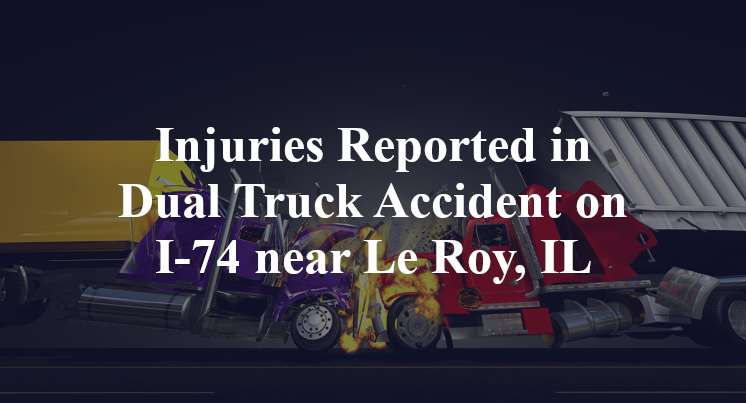Injuries Reported in Dual Truck Accident on I-74 near Le Roy, IL
Le Roy, IL — October 18, 2025, one person was hurt due to a two-truck accident at approximately 10:30 a.m. along Interstate Highway 74.
According to authorities, the accident took place in the westbound lanes of I-74 near Le Roy, though the exact location has not been specified in reports.

Details surrounding the accident remain scarce. Officials indicate that, for as yet unknown reasons, a collision occurred involving two 18-wheelers, both of which apparently jackknifed over the course of the accident. One person reportedly suffered injuries of unknown severity; they were transported to a local medical facility by EMS in order to receive necessary treatment. Additional information pertaining to this incident is not available at this point in time. The investigation is currently ongoing.
Commentary by Attorney Michael Grossman
When both 18-wheelers in a crash end up jackknifed, it suggests more than just a simple mistake—it often points to a breakdown in coordination, reaction time, or road conditions that neither driver was prepared to handle. Whether one truck triggered the chain of events or both responded poorly to a shared hazard, the result is the same: a high-risk situation with enormous potential for injury and liability.
Right now, it's not clear which vehicle initiated the crash or whether external factors—like weather, road debris, or traffic—contributed. That’s why engine control module (ECM) data, dash cam footage, and eyewitness accounts will be critical to sorting out who did what, and when. If one driver braked suddenly, swerved, or drifted out of lane, the other’s reaction (or failure to react) may explain the dual jackknife scenario.
In my experience, crashes like this often boil down to following distance and speed management. Heavy trucks need time and space to respond to sudden changes, especially on the interstate. If one or both drivers were traveling too close or too fast for the conditions, those decisions will come under scrutiny.
Another angle worth investigating is whether either vehicle was hauling improperly balanced or unsecured cargo. Load shift inside a trailer can easily lead to a jackknife, even when the driver is doing everything right. Investigators should check bill of lading records, load distribution, and whether the freight met federal securement standards.
Company policies also matter here. Were the drivers under pressure to meet delivery windows? Were they adequately trained to handle evasive maneuvers at highway speed? Did either truck have collision-avoidance systems or automatic braking features that might have helped prevent or mitigate the crash? These are the upstream factors that often separate a one-off error from a systemic failure.
Key Takeaways:
- The core issue is how and why both trucks jackknifed—suggesting sudden braking, evasive action, or poor road conditions.
- ECM data and dash cams will be critical to reconstruct the timeline and determine which truck initiated the sequence.
- Following distance, speed, and load stability may have played a major role and should be investigated closely.
- Company oversight—including driver training, scheduling pressure, and safety technology—may be relevant to determining liability.
- Even without third-party vehicles involved, fault can still rest heavily on driver behavior or systemic company practices.

“These are essential reads for anyone dealing with the aftermath of a truck wreck”– Attorney Cory Carlson